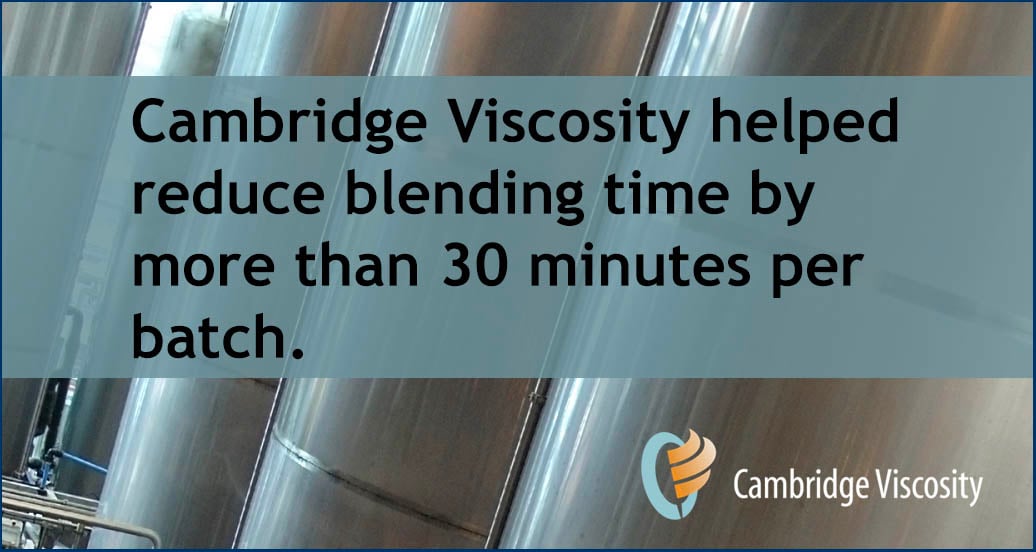 A refinery was interested in increasing the production of their lubrication products by reducing the time it takes to formulate the products. The facility had several blending tanks in varying sizes, which were used for blending multiple products. Their operating procedures required that they test samples from the top, middle, and bottom of the tanks to ensure the samples were homogenous. Because they didn’t know the exact blending time of the batches, their procedures required that they wait for an hour or more to be sure that full blending had occurred. This effort was time-intensive and could add 45 minutes or more to a batch. If the mixing wasn’t complete and the tests needed to be performed again, even more time would be added to the process.
A refinery was interested in increasing the production of their lubrication products by reducing the time it takes to formulate the products. The facility had several blending tanks in varying sizes, which were used for blending multiple products. Their operating procedures required that they test samples from the top, middle, and bottom of the tanks to ensure the samples were homogenous. Because they didn’t know the exact blending time of the batches, their procedures required that they wait for an hour or more to be sure that full blending had occurred. This effort was time-intensive and could add 45 minutes or more to a batch. If the mixing wasn’t complete and the tests needed to be performed again, even more time would be added to the process.
We were sure we could help them out.
At the invitation of the customer, Cambridge Viscosity performed a trial to help the process engineers determine how quickly the fluid in the tank became homogenous during the blending process. CVI installed two VISCOpro viscometers with model 321 sensors on a single three-meter stem and inserted the stem into a lubricant blending tank from the top.
 Prior to the test, CVI and the engineers discussed whether installing two viscosity sensors (installed at the top and bottom) or three viscosity sensors (installed top, middle, and bottom) would be necessary to determine if the mixing was complete, because they were not sure how quickly the mixture became uniform. It was decided that a custom viscosity probe with sensors installed at the top and bottom would be the best option for testing. (See illustration to the right.)
Prior to the test, CVI and the engineers discussed whether installing two viscosity sensors (installed at the top and bottom) or three viscosity sensors (installed top, middle, and bottom) would be necessary to determine if the mixing was complete, because they were not sure how quickly the mixture became uniform. It was decided that a custom viscosity probe with sensors installed at the top and bottom would be the best option for testing. (See illustration to the right.)
The results of the test showed that blending was complete significantly earlier than expected, which allowed them to perform final quality control procedures and transfer the product up to 30 minutes earlier. Additionally, they found that there was little stratification and that both the upper and lower viscometers showed that the fluid reached the target viscosity within one minute of each other.
The facility selected a final configuration that consisted of a two-meter probe with a single model 321 viscosity sensor for each tank. During the process, the viscosity is monitored in the tank until the values plateau and then a sample is sent to the lab for final quality control before transfer for shipment. This method reduced the manufacturing time, which led to increased output capacity, reduced demand on the lab, and improved QA traceability.
The CVI viscometer helped the refinery meet several goals, including:
- Reducing lubricant blending time by more than 30 minutes
- Increasing output capacity
- Reducing demand on the laboratory
- Enhancing QA traceability
The CVI application engineers are ready to tackle your unique applications. If you’d like to discuss an idea, application, or challenge, fill out the form and we’ll get back to you asap.





